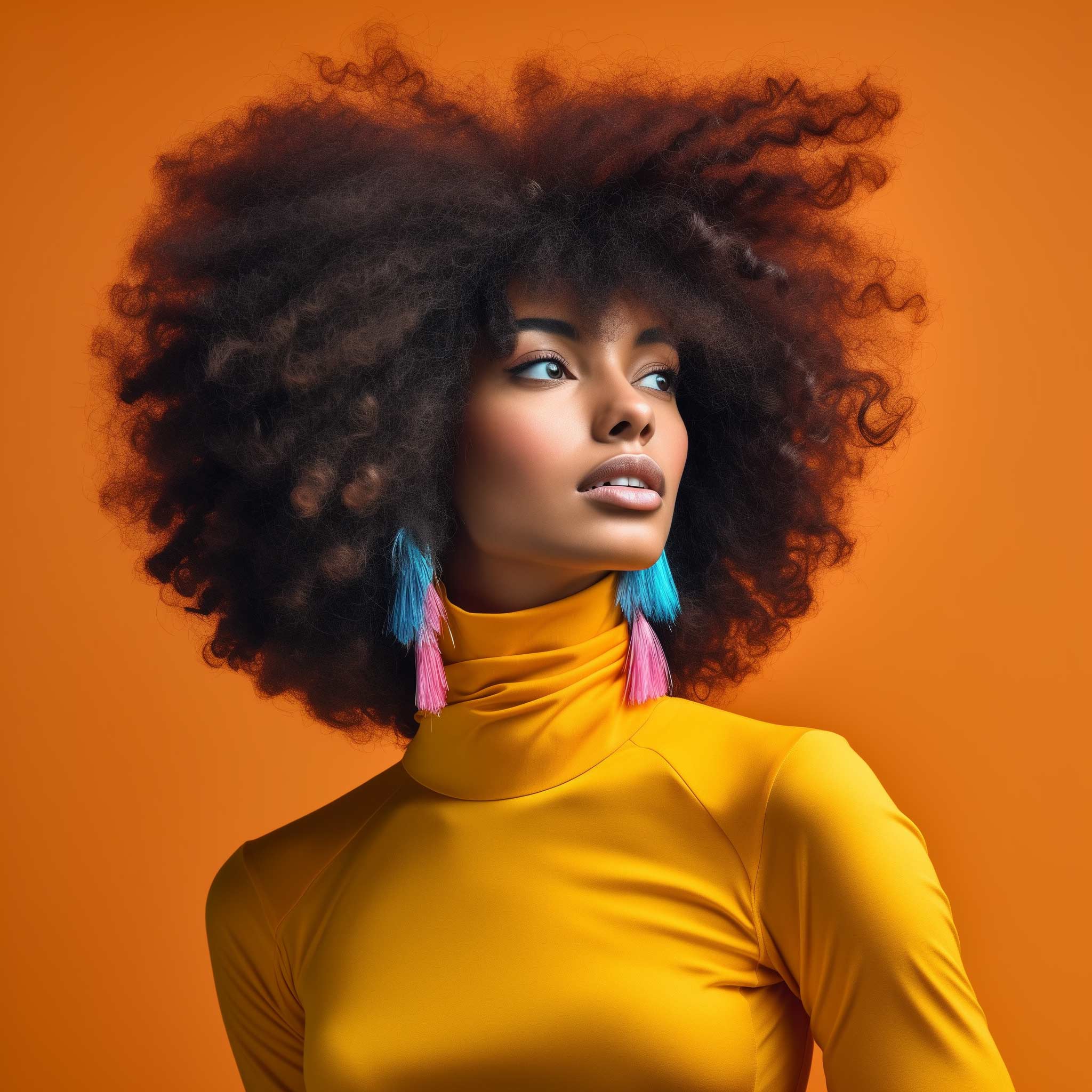In this comprehensive post, you’ll explore the dynamic world of visual content creation, comparing AI-generated images with traditional stock photography.
Introduction
In a world where visual content reigns supreme, the advent of AI-generated images heralds a seismic shift, challenging the established realm of stock photography.
This unfolding tale is reminiscent of a classic underdog story, signifying a crucial juncture in the creative industry. With the finesse of a master storyteller, one could weave the intricate patterns of technology, art, and human experience into a compelling narrative.
Picture a scenario where a marketer, pressed against a looming deadline, requires the perfect image to complete a campaign.
In the bygone era, this quest would have led to a deep dive into the vast ocean of stock images, hoping to find that one picture that truly aligns with their vision.
Now, the narrative has shifted; the marketer turns to an AI-powered tool, ready to generate a bespoke image, meticulously crafted to fit their needs.
This revolution transcends the boundaries of mere technological advancement; it delves into our understanding of creativity and originality.
Each AI-generated image is a product of digital alchemy, where data and algorithms are transmuted into visual artistry.
It prompts profound questions about the nature of human creativity: Can a machine replicate, or even eclipse, the nuanced vision of a seasoned photographer?
These are the queries at the core of our exploration.
However, the story of AI imagery is not just a tale of technological conquest; it’s interlaced with ethical dilemmas, legal intricacies, and aesthetic challenges.
In this journey, we’ll navigate the pros and cons of AI-generated images, setting them against the traditional stronghold of stock photography.
Our exploration will not only reveal the impact of this tech marvel on various industries but also its subtle yet significant effects on our cultural ethos and creative expression.
As we embark on this exploration, we find ourselves at the intersection of a visual revolution. This narrative is about innovation and disruption, about the relentless progression of technology.
More importantly, it’s a testament to the ever-evolving narrative of human creativity.
Welcome to an era where algorithms meet artistry, where data intertwines with design, and where the future of visual content is being redrawn in bold, new strokes.
Understanding AI-Generated Images
Definition and Explanation:
In the digital era, AI-generated images represent a groundbreaking advancement in the realm of visual content.
These are images created not by human hands but by sophisticated algorithms.
Utilizing techniques from the field of machine learning and artificial intelligence, these systems can generate realistic or fantastical images based on textual descriptions or data inputs.
Technical Overview:
The process begins with training the AI using large datasets of images. This training allows the AI to learn and recognize various patterns, styles, and elements of imagery.
When provided with a prompt or parameters, the AI then applies this learned knowledge to generate new, unique images that correspond to the given input, showcasing its capability to blend creativity and technical precision.
Evolution and Capabilities:
The evolution of AI in image creation has been meteoric.
From its nascent stages of generating simple patterns to its current ability to produce detailed and complex images, AI’s capabilities have expanded immensely.
Today’s AI can create not just static images but also dynamic visual content, encompassing a range of styles from photorealistic to surrealistic, demonstrating a new horizon in digital art and media production.

The World of Stock Images
Definition and Characteristics:
Stock images are professional photographs of common places, landmarks, nature, events, or people that are bought and sold on a royalty-free basis and can be used and reused for commercial design purposes.
They are widely used in advertising, marketing, and design, owing to their convenience and wide availability.
Stock images provide a quick and cost-effective solution for businesses and creators who need high-quality images without the time or resources for a custom photo shoot.
Traditional Role and Use:
Traditionally, stock images have been a staple in the advertising and marketing industries.
They offer a quick and efficient way to visually communicate a concept or theme. From print media to digital advertisements, stock photos provide a level of versatility and accessibility that has made them invaluable to content creators.
They have been particularly useful for small businesses and independent creators who might not have the budget for custom photography.
Sources and Availability:
Stock images are available through various online platforms and stock photo agencies, each offering a wide range of options in terms of subjects, styles, and pricing.
These platforms often operate on a subscription model or offer individual purchases.
The ease of access to vast libraries of stock images has enabled creators around the world to find almost any type of image they need with just a few clicks.
Pros of AI-Generated Images
Customization:
One of the most significant advantages of AI-generated images is the high level of customization they offer.
Unlike stock images, which are fixed in their composition and content, AI-generated images can be tailored to specific needs.
Users can specify elements, styles, and themes to create a unique image that perfectly fits their project’s requirements.
Originality:
AI-generated images ensure a level of originality that is often unattainable with stock photos.
Each image created by AI is unique, reducing the risk of using the same imagery as competitors or other media.
This originality is crucial for brands and creators seeking to stand out and make a distinct visual statement.
Speed and Efficiency:
AI image generation tools are incredibly fast, capable of producing images within minutes or even seconds.
This efficiency is a game-changer for projects with tight deadlines, allowing designers and marketers to quickly iterate and experiment with different visual concepts.
Cost-Effectiveness:
In many cases, using AI to generate images can be more cost-effective than purchasing stock photos, especially when specific, unique imagery is required.
There are no licensing fees or royalties associated with AI-generated images, which can lead to significant cost savings over time.
Avoiding Licensing and Copyright Issues:
With AI-generated images, there’s no need to worry about the complex licensing agreements and copyright restrictions often associated with stock photos.
This freedom can be particularly beneficial for businesses and creators who require a hassle-free approach to using and distributing images.
The Hidden Challenges of AI-Generated Imagery
The Illusion of Perfection:
- AI-generated images, at first glance, present a world of flawless creativity.
- However, beneath this facade lies a complex reality. Like the intricate patterns of a Persian carpet, a closer look reveals subtle imperfections and limitations in detail and texture.
- These images, while striking, often lack the serendipitous imperfections that give traditional photography its depth and authenticity.
The Ethical Maze:
- As we navigate the labyrinth of AI-generated content, we encounter ethical quandaries.
- The question of artistic integrity arises: is an image truly creative if birthed from algorithms?
- The AI, a Pandora’s box of the digital age, blurs the lines between human creativity and machine efficiency, leaving us to ponder the true owner of an AI-generated masterpiece.
The Absence of the Human Touch:
- In the dance of pixels and code, the human element – the photographer’s eye, the unintentional, yet serendipitous capture – is conspicuously absent.
- AI, despite its prowess, fails to replicate the intuitive grasp of context and emotion that a human photographer offers.
- Each AI-created image, while visually compelling, misses the nuances, the story behind the lens, the unspoken narrative that human photography effortlessly conveys.
Algorithmic Echo Chambers:
- AI systems, trained on vast datasets, often fall prey to the echo chamber effect.
- They recycle and remix existing styles and patterns, potentially stifling true innovation.
- This repetitive cycle raises concerns about the homogenization of visual content, where diverse and groundbreaking perspectives might be lost in a sea of algorithmically generated familiarity.
The Legal Labyrinth:
- The legal landscape surrounding AI imagery is akin to a maze with moving walls.
- Copyright complexities emerge: who owns an AI-generated image? The creator of the algorithm? The user who prompted it? The original artists whose works trained the AI?
- Navigating this uncharted territory requires a deft understanding of emerging laws and regulations, a challenge for businesses and creators alike.
The Enduring Appeal of Stock Photography
The Authenticity Factor:
- Stock images are akin to time capsules, capturing real moments, places, and emotions.
- They bear the hallmark of authenticity that AI-generated images often struggle to replicate.
- Like a well-crafted novel, they tell stories that resonate on a human level, imbued with the subtleties and complexities of real life.
The Professional Eye:
- Behind every stock photo is a photographer’s vision – a blend of skill, experience, and a moment’s intuition.
- These images are not just snapshots but crafted compositions, reflecting a professional’s eye for detail, light, and perspective.
- It’s this professional touch that often makes stock photos a preferred choice for conveying quality and credibility.
The Richness of Diversity:
- Stock photography offers a kaleidoscope of human experience – a diversity that AI-generated images are still catching up to.
- From the streets of bustling cities to the tranquility of rural landscapes, these images encompass the vast tapestry of human existence.
- This diversity is not just in geography but in capturing the myriad facets of human emotion and interaction.
Immediate Availability and Versatility:
- Stock images are a ready-made solution, available at a moment’s notice.
- They offer versatility – whether it’s for a quick social media post or a major advertising campaign.
- This ease of access and wide-ranging applicability make stock photos a pragmatic choice for many, especially when time is of the essence.
Clarity of Licensing and Rights:
- The world of stock photography comes with clear rules of engagement.
- Licensing terms are well-established, providing users with a clear understanding of how images can be used and distributed.
- This clarity brings peace of mind, especially in a world where copyright infringement can have significant legal and financial implications.
Navigating the Limitations of Stock Photography
In the vast world of stock photography, where images are as abundant as stars in the sky, we encounter a complex landscape, one that is not without its pitfalls and challenges. This section explores the less obvious, yet significant, drawbacks of relying on stock images, offering a nuanced perspective that balances the seemingly straightforward benefits of this popular resource.
The Overwhelming Abundance of Choices
- The sheer volume of stock images presents a paradox. While it seems advantageous to have countless options at one’s fingertips, this abundance often leads to decision fatigue. Creators find themselves adrift in an ocean of possibilities, struggling to identify the image that perfectly aligns with their vision. This search, rather than being a journey of discovery, can become a tedious and time-consuming endeavor.
The Cliché Trap
- Familiarity breeds contempt, especially in the realm of stock photography. Many stock images have become clichés, their overuse rendering them ineffective in capturing the audience’s attention. These images, akin to overplayed songs, lose their ability to evoke emotions or deliver impactful messages, leading to a bland uniformity that dilutes brand identity and storytelling effectiveness.
Cost Considerations: Beyond the Surface
- At first glance, stock photography appears as a cost-effective solution. However, a deeper dive into its pricing structure reveals hidden complexities. Subscription fees, licensing limitations, and additional charges for high-resolution images can quickly escalate costs. For small projects or businesses operating on tight budgets, these costs can be prohibitive, challenging the perceived economic advantage of stock images.
Customization Constraints
- Stock images offer limited flexibility for customization. Users are constrained to the parameters of the existing image, often finding that these do not perfectly align with their specific needs or brand identity. This lack of adaptability can be a critical hindrance, especially when unique or highly tailored visual content is required.
The Legal Labyrinth
- The legalities surrounding stock photography are intricate. Licensing terms can be labyrinthine, and inadvertent misuse of an image can lead to copyright infringement issues. Navigating these legal waters requires vigilance and a thorough understanding of the usage rights, adding a layer of complexity to the use of stock images.
Case Studies and Real-World Applications
Exploring the real-world implications of choosing between AI-generated images and stock photography requires delving into practical examples and case studies. This section aims to illuminate the strengths and limitations of each through real-life applications, providing a grounded perspective on their impact across various industries.
Advertising Industry: Balancing Creativity and Authenticity
- A marketing campaign for a new product might utilize AI-generated images to create unique and eye-catching visuals that stand out in a crowded marketplace. However, a campaign focusing on emotional connection with the audience might prefer stock images for their authentic portrayal of human experiences.
- Case Study: A comparison of two advertising campaigns – one using AI-generated imagery and the other using stock photos – highlighting their respective impacts on audience engagement and brand perception.
Media and Journalism: The Quest for Realism and Speed
- In the fast-paced world of news and media, AI-generated images offer the advantage of speed, allowing for the quick creation of visuals for breaking stories. Yet, stock images, with their authentic depictions of real events and places, hold undeniable value in journalistic integrity.
- Case Study: Examining how a news outlet leverages AI-generated images for immediate visual content creation, contrasted with the use of stock photography in feature articles requiring authentic visual representation.
Education and Training: Enhancing Learning Experiences
- Educational materials benefit from the customization capabilities of AI-generated images, enabling the creation of specific visuals that enhance learning. In contrast, stock images are often used for their relatability and realistic portrayal of scenarios in training modules.
- Case Study: An analysis of an e-learning platform that integrates AI-generated images for custom educational content, compared with a training program using stock images to illustrate real-world scenarios.
Web Design and Digital Content: Aesthetic Versatility and Practicality
- Web designers may prefer AI-generated images for their ability to create bespoke and thematic visuals that align with a brand’s digital identity. On the other hand, stock images are frequently chosen for their professional quality and ease of use in website design.
- Case Study: A showcase of two websites – one featuring AI-generated imagery and the other utilizing stock photos – discussing the impact on user experience and brand consistency.
Entertainment and Gaming: Crafting Worlds and Narratives
- In the realm of gaming and entertainment, AI-generated images offer unparalleled creative freedom to craft unique environments and characters. Conversely, stock images might be used in conceptual stages or for marketing materials where realism and relatability are key.
- Case Study: An exploration of a video game development process using AI-generated images for conceptual art, contrasted with a film marketing campaign employing stock photography.
Conclusion – Balancing AI Innovation with Traditional Imagery
In the evolving landscape of visual content, the journey from the realm of traditional stock photography to the innovative world of AI-generated images is marked by both excitement and caution. As we stand at this crossroads, it is essential to weigh the strengths and limitations of both, understanding that the choice is not binary but rather a strategic decision based on context, purpose, and desired impact.
Synthesizing the Key Points:
- AI-generated images offer customization, originality, and efficiency, making them a powerful tool in the arsenal of creators who seek to push the boundaries of visual content.
- Stock photography, with its authenticity, professional quality, and diverse representation of human experiences, continues to hold significant value in areas where relatability and realism are paramount.
- The decision between these two options is not just about choosing a type of image, but about choosing a pathway to convey a message, evoke emotions, and connect with an audience.
The Future Outlook:
- The rapid advancement of AI technology suggests a future where AI-generated images become even more sophisticated, potentially narrowing the gap in quality and realism compared to traditional photography.
- However, the enduring appeal of stock photography, rooted in its authenticity and human touch, ensures its continued relevance in various industries.
- The future of visual content creation may well involve a hybrid approach, leveraging the best of both worlds to meet the evolving demands of audiences and markets.
Final Thoughts:
- The choice between AI-generated and stock images is a reflection of a broader narrative about technology and creativity, efficiency and authenticity, innovation and tradition.
- As creators, marketers, and storytellers navigate this landscape, the key lies in understanding the unique value each option brings and making informed decisions that align with their creative vision and goals.
- In this dynamic domain, flexibility and adaptability will be crucial, as will be the willingness to embrace new possibilities while respecting the enduring principles of effective visual communication.



